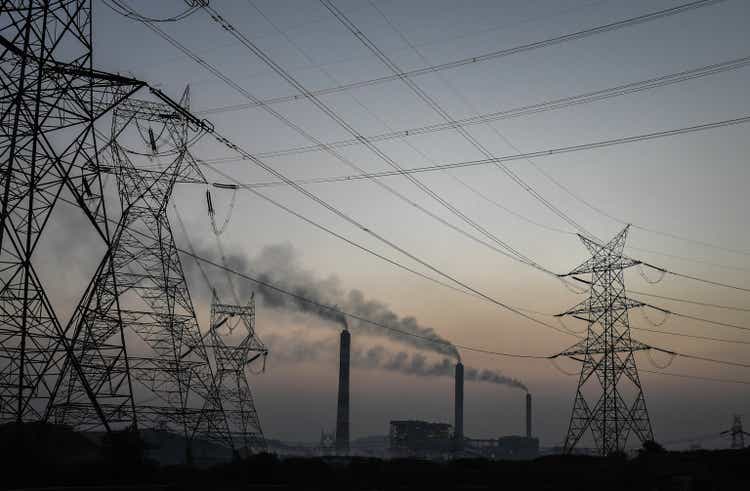Ritesh Shukla/Getty Images News
By Gui Xiong Teo, CFA
We see a positive transformation in Indian renewables that could provide a significant opportunity for investors.
In August, India reiterated its commitment to draw 50% of its electricity generation capacity from non-fossil fuel sources, and to reduce its emissions intensity (based on GDP) to 45% below 2005 levels, by 2030.
Renewable energy is a crucial element in this plan. Over the last eight years, India’s renewable capacity grew from 76 Gigawatts to 152 Gigawatts and could accelerate further.
With burgeoning electricity demand, a spike in conventional thermal energy prices this year has increased India’s energy import costs, but with technological improvements and its unique geographical location, India is motivated to deploy its abundant solar and wind resources.
Multiple factors support the sector: Demand for renewable energy is set to increase as costs decline due to greater efficiency and technological improvement, and India has also begun shifting its supply chain onshore. As such, its expanding renewable ecosystem should prompt wider adoption.
Importantly, new regulatory policies compel power “off-takers” such as local distribution companies (discoms) to make more timely payments to renewable generation companies (gencos), improving the latter’s cash flows and lowering their receivable cycles.
In the past, despite repeated challenges by discoms to power purchase agreements, Indian courts have favored gencos, helping convince investors that their rights would be well protected.
In our view, as the renewable sector scales up and technology matures, funding sources will likely expand, at lower cost. Domestically, the Indian government is making more direct funding available through public financial institutions. Internationally, foreign direct investments from highly rated investors remain forthcoming.
Within the Asian bond universe, India renewables have seen a structural transformation. The sector’s average credit rating, which was B+ across three issuers in June 2017, was BB across 14 issuers in June 2022. We believe this improving trend is likely to continue.
Although debt and revenue currencies are mismatched, these issuers are FX-hedged at the outset of bond issuance, resulting in limited exposure to unexpected currency depreciation. Moreover, we believe potential rates of return provide ample cushion to absorb near-term interest rate increases.
In the near term, we expect sector cash flows to improve given favorable regulatory policies. In the medium term, we anticipate that gencos’ credit profiles will improve, albeit slowly as capex into the sector remains high.
In the long term, renewables could become an established form of low-cost and stable energy for long-term social and economic development. In our view, there are merits to an optimistic outlook for India’s renewable energy sector.
|
This material is provided for informational purposes only and nothing herein constitutes investment, legal, accounting or tax advice. This material is general in nature and is not directed to any category of investors and should not be regarded as individualized, a recommendation, investment advice or a suggestion to engage in or refrain from any investment-related course of action. Investment decisions and the appropriateness of this material should be made based on an investor’s individual objectives and circumstances and in consultation with his or her advisors. Information is obtained from sources deemed reliable, but there is no representation or warranty as to its accuracy, completeness or reliability. All information is current as of the date of this material and is subject to change without notice. The firm, its employees and advisory accounts may hold positions of any companies discussed. Any views or opinions expressed may not reflect those of the firm as a whole. Neuberger Berman products and services may not be available in all jurisdictions or to all client types. This material may include estimates, outlooks, projections and other “forward-looking statements.” Due to a variety of factors, actual events or market behavior may differ significantly from any views expressed. Investing entails risks, including possible loss of principal. Investments in hedge funds and private equity are speculative and involve a higher degree of risk than more traditional investments. Investments in hedge funds and private equity are intended for sophisticated investors only. Indexes are unmanaged and are not available for direct investment. Past performance is no guarantee of future results. This material is being issued on a limited basis through various global subsidiaries and affiliates of Neuberger Berman Group LLC. Please visit www.nb.com/disclosure-global-communications for the specific entities and jurisdictional limitations and restrictions. The “Neuberger Berman” name and logo are registered service marks of Neuberger Berman Group LLC. © 2009-2022 Neuberger Berman Group LLC. All rights reserved. |
Editor’s Note: The summary bullets for this article were chosen by Seeking Alpha editors.


Be the first to comment